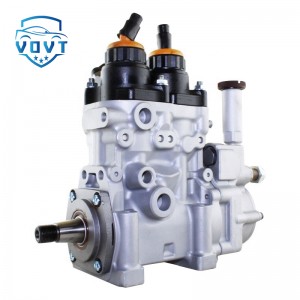Diesel Fuel Injection Pump BHF6P120005 101130678-1100 Engine Auto Engine Part
products description
| Reference Code | BHF6P120005 |
| MOQ | 1 PCS |
| Certification | ISO9001 |
| Place of Origin | China |
| Packaging | Neutral packing |
| Quality Control | 100% tested before shipment |
| Lead time | 7~15 working days |
| Payment | T/T, Western Union, Money Gram, Paypal, Alipay, Wechat |
Application of 3D Printing Technology in Prototype Development of Oil Pumps
Abstract
With the growing demand for rapid design iteration and performance optimization in modern fuel and lubrication systems, 3D printing (additive manufacturing) has emerged as a powerful tool for the prototype development of oil pumps. Unlike traditional subtractive manufacturing, 3D printing enables direct fabrication of complex geometries, internal flow channels, and integrated components with reduced production time and cost. This study explores the feasibility, precision, and functional validation of applying 3D printing technology in the early-stage design and testing of oil pump prototypes.
A series of prototype oil pumps were fabricated using selective laser melting (SLM) for metal components and stereolithography (SLA) for transparent polymer housings to facilitate internal flow visualization. The 3D-printed prototypes were evaluated in terms of dimensional accuracy, surface roughness, structural integrity, and hydraulic performance. Experimental results showed that SLM-produced stainless-steel pump bodies achieved dimensional tolerance within ±0.03 mm, while post-processed surface roughness was reduced to Ra 1.8 μm, sufficient for preliminary functional testing.
Flow field visualization and CFD simulation demonstrated that the 3D-printed prototypes could accurately replicate the expected internal flow distribution and pressure characteristics of machined models. The design flexibility of additive manufacturing allowed the integration of optimized internal oil channels, lightweight lattice structures, and improved heat dissipation features, which were difficult to realize through conventional machining.
In performance tests, the additively manufactured oil pumps achieved over 95% of the flow efficiency of traditionally machined prototypes, confirming the functional viability of 3D printing for prototype validation. Furthermore, the lead time for prototype production was shortened by over 60%, significantly accelerating the design–test–iteration cycle in product development.
The study concludes that 3D printing provides a highly effective and economical solution for oil pump prototype manufacturing, particularly during early R&D stages where design flexibility and quick iteration are critical. Future work will focus on improving material strength, surface finish, and high-temperature resistance, as well as developing hybrid manufacturing processes that combine additive and subtractive methods for functional end-use components.



















